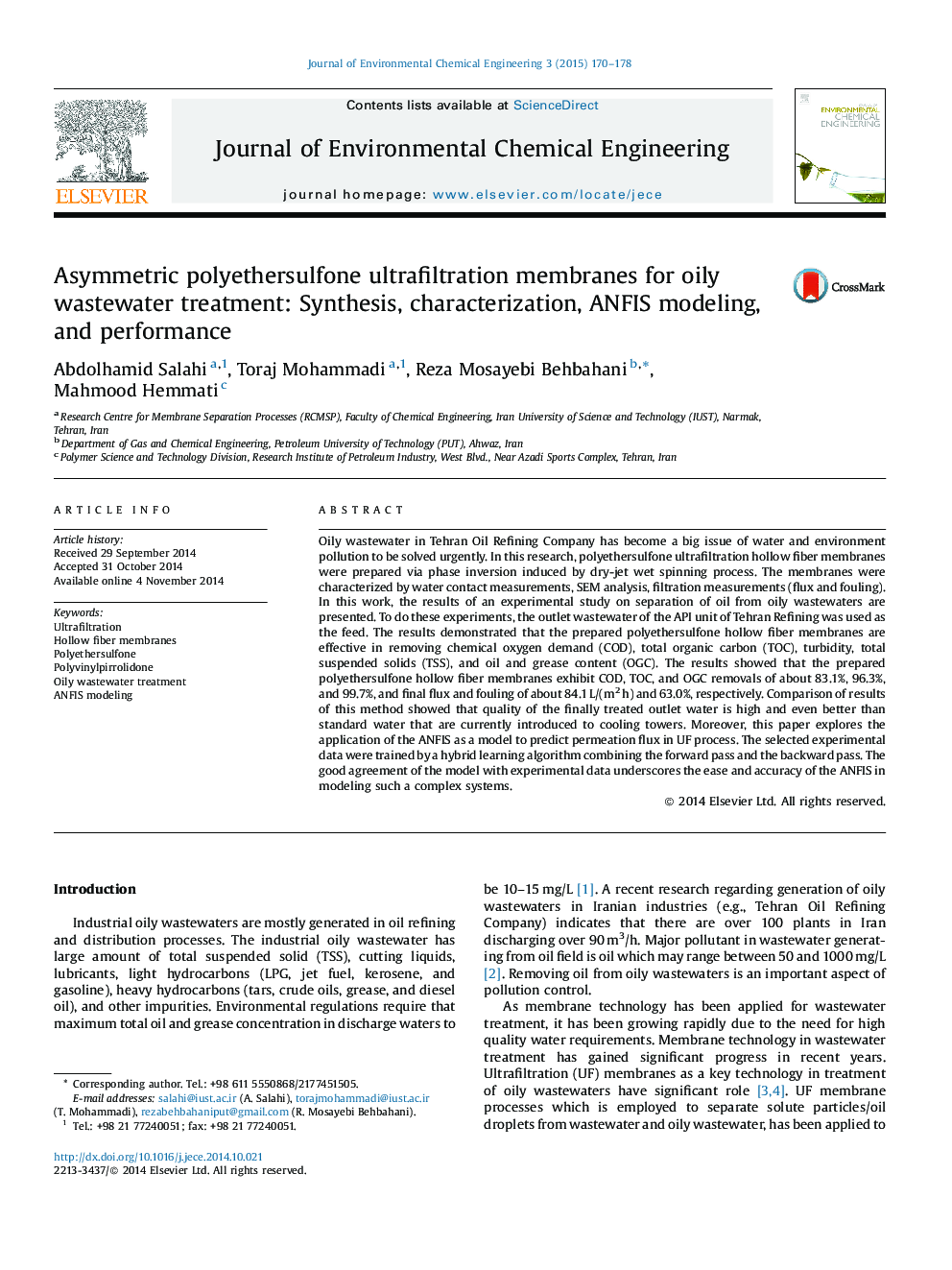| کد مقاله | کد نشریه | سال انتشار | مقاله انگلیسی | نسخه تمام متن |
|---|---|---|---|---|
| 222397 | 464275 | 2015 | 9 صفحه PDF | دانلود رایگان |

• UF hollow fiber membranes were prepared using dry-jet wet spinning.
• Morphology and performance of the membranes were investigated.
• Prepared membranes was effective and suitable for treatment of oily wastewater.
• Flux and rejection properties to oily wastewater treatment were studied.
• The application of ANFIS as a model to predict permeation flux in UF process.
Oily wastewater in Tehran Oil Refining Company has become a big issue of water and environment pollution to be solved urgently. In this research, polyethersulfone ultrafiltration hollow fiber membranes were prepared via phase inversion induced by dry-jet wet spinning process. The membranes were characterized by water contact measurements, SEM analysis, filtration measurements (flux and fouling). In this work, the results of an experimental study on separation of oil from oily wastewaters are presented. To do these experiments, the outlet wastewater of the API unit of Tehran Refining was used as the feed. The results demonstrated that the prepared polyethersulfone hollow fiber membranes are effective in removing chemical oxygen demand (COD), total organic carbon (TOC), turbidity, total suspended solids (TSS), and oil and grease content (OGC). The results showed that the prepared polyethersulfone hollow fiber membranes exhibit COD, TOC, and OGC removals of about 83.1%, 96.3%, and 99.7%, and final flux and fouling of about 84.1 L/(m2 h) and 63.0%, respectively. Comparison of results of this method showed that quality of the finally treated outlet water is high and even better than standard water that are currently introduced to cooling towers. Moreover, this paper explores the application of the ANFIS as a model to predict permeation flux in UF process. The selected experimental data were trained by a hybrid learning algorithm combining the forward pass and the backward pass. The good agreement of the model with experimental data underscores the ease and accuracy of the ANFIS in modeling such a complex systems.
Figure optionsDownload as PowerPoint slide
Journal: Journal of Environmental Chemical Engineering - Volume 3, Issue 1, March 2015, Pages 170–178